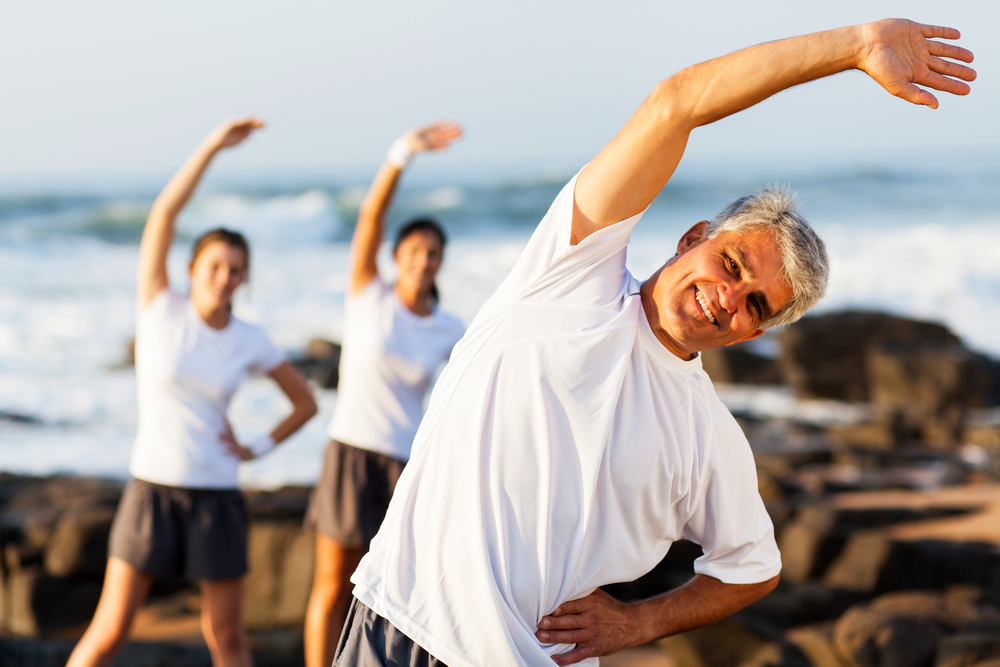
“Only 20 percent of our longevity is genetically determined. The rest is what we do, how we live our lives and increasingly the molecules that we take.” – David Andrew Sinclair
In spite of everything we do or don’t do in life and for fitness, the one constant is that our bodies are aging daily.
We can diminish some of the more immediate effects of aging, we can postpone some of the more common results of getting older, but our bodies inexorably age regardless of and in spite of all that we do.
Age and Pain Management
With techniques and therapies available such as Active Release Techniques® and NeuroKinetic Therapy™, we can identify, treat, and very often bring relief from various types of pain, including chronic pain. However, managing pain doesn’t just mean learning to minimize it or “live with it.” It also means anticipating and avoiding it.
One article notes that,
“There are certain immutable truths concerning the performance of the human body as it ages, particularly as the athlete reaches age 40. The physical peak for most humans, in most sports, is between 25 and 35 years of age; during this peak period, the well-conditioned athlete can create a confluence of muscular strength, peak cardiovascular and oxygen transport, speed and reaction time, and mental capabilities (including the ability to deal with competitive pressures), all bound together by a desire to succeed.”
As we noted, much of this can be delayed or mitigated through regular exercise and conditioning, but there are changes that occur with aging on a molecular level that are unavoidable. And one of these changes is the susceptibility to muscle and connective tissue pain.
According to a post at Healthline.com,
“The older you get, the more common it is to experience mild soreness or aching when you stand, climb stairs, or exercise. The body doesn’t recover as quickly as it did in younger years. Also, cartilage naturally deteriorates, which can cause soreness. The smooth tissue that cushions joints and helps them move more easily disappears with age.”
So, the question that inevitably arises for most people, especially those that are physically active or athletic, is how to avoid or minimize pain and injury as we age?
Awareness and Adaptability
An intentional mindset of body awareness and conscientious activity can help to avoid undue stress on the body as well as heightened sensitivity to it.
Body awareness techniques have been argued to develop increases in body awareness can help in the management of pain and facilitate sports injury rehabilitation. In addition, researchers have found that body awareness increases prior to sports competition and that this response is adaptive to successful performance.
Reinforcing fundamental preventative practices and avoiding overexertion is key to reducing pain and possible injury as we age. This does not mean avoiding exercise or physical activity, but simply pacing, being acutely aware of pain thresholds, and maintaining exertion parameters.
Our mindsets are just as critical for maintaining pain-free activity and performance.
The best thing we can do as we age is to keep moving, keep exercising and keep working out. It has been repeatedly shown and documented that a proper exercise program will help men and women delay many of the changes of aging, particularly when combined with other preventive measures.
Harvard Health offers these tips for a mentally positive approach to fitness as you age:
- Exercise safely. It makes little sense to reduce your risk of heart attack or stroke by increasing your risk of accidental injury or death. Adjust your routine in weather that is hot, cold, or wet.
- Listen to your body. Learn warning signals of heart disease, including chest pain or pressure, disproportionate shortness of breath, fatigue, or sweating, erratic pulse, lightheadedness, or even indigestion.
- Do not ignore aches and pains that may signify injury; early treatment can often prevent more serious problems.
- Do not exercise if you are feverish or ill.
- Work yourself back into shape gradually after a layoff, particularly after illness or injury.
The bottom line for most of us that, while aging is both unavoidable and inevitable, pain and loss of performance are not. This does not mean that we will be able to achieve feats of physical performance at 80 that we could at 20, but we can still come close!
Treating Pain from Aging With Pain and Performance Solutions
For chronic muscle pain or injuries of most any type, the first step in recovery is allowing us to get to know you and your pain issues. Once you make your first appointment, we’ll want to learn about your present discomfort as well as any history of discomfort.
After a full examination, we can determine which form of treatment is needed to help you on your road to recovery. As our bodies start to compensate for pain, this can allow you to move on with your day. However, your body can also shift that pain around to compensate for your discomfort and this can lead to other forms of pain.
Sciatic nerve pain relief with ART® begins when we understand how and where your pain originated. That could mean it started with a previous injury or as the result of a work posture or a walking or sitting practice you might have developed.
Your trust in us is key, as is your honesty. Ultimately, getting your body working properly and healthy is the only way to achieve total recovery. So, don’t hesitate to reach out. We are here to help and will answer any, and all questions that you may have. You can reach us at (707) 636-4404 or by filling out our online contact form.